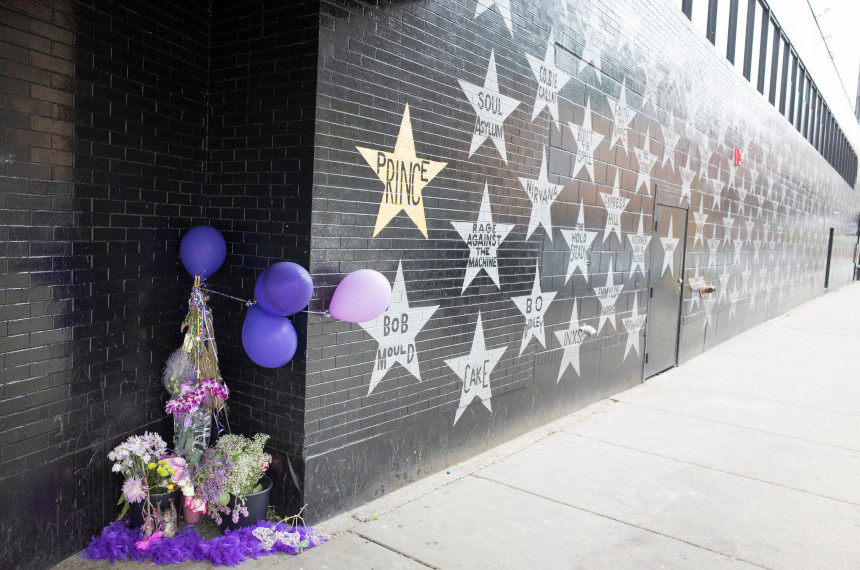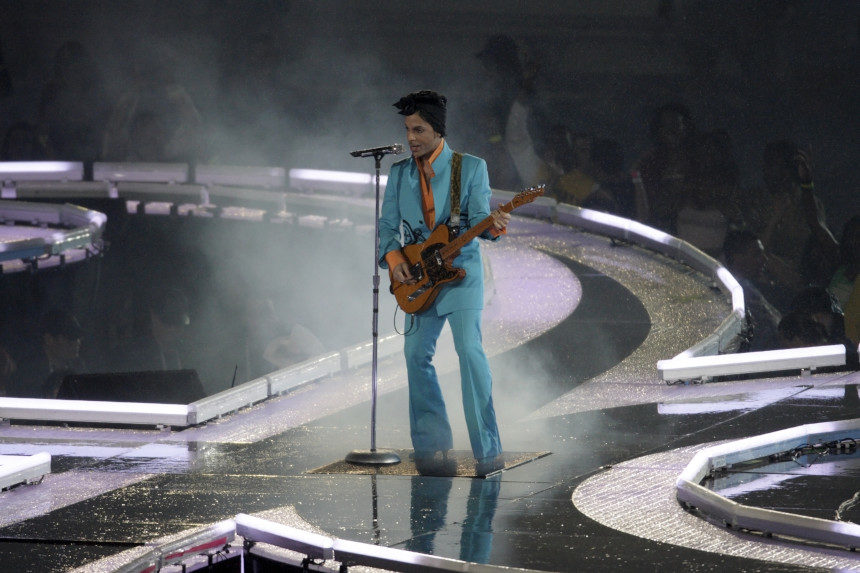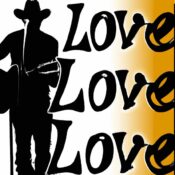Every city, big or small, has a local music scene. Sometimes the scene is dominated by one sound at one particular time, like when the R&B stylings of Motown emerged from Detroit in the ’60s, or when the distortion-laden “yarl” that the press called Grunge erupted from Seattle in the ’90s. Maybe it’s appropriate that Minneapolis, Minnesota, a Twin City with St. Paul, birthed two distinct sounds in the late 1970s and early 1980s that would go on to shape music into the next decades. On one side, there was the funk/soul/dance/rock hybrid spearheaded by Prince and bolstered by artists like Morris Day and The Time, Sheila E., and Vanity 6. On the other side, you had the post-punk power-pop of Hüsker Dü, The Replacements, and Soul Asylum. Both scenes were in operation at the same time, but it was 40 years ago in 1981 that many of these crucial groups releasedg important albums.

In one sense, the musical split was geographical. The R&B-based contingent generally operated out of the north side of Minneapolis, while the south side was largely populated by guitar-based rock bands. The center of the Venn diagram of the two scenes, both in terms of location and venue, is a building that houses two distinct clubs. Located at 701 First Avenue North, First Avenue (aka The Mainroom) and 7th Street Entry (aka The Entry) are two staging areas in the same building; The Mainroom can accommodate an audience of 1500, while The Entry’s capacity is around 250. First Avenue promoter Steve McClellan saw the rising popularity of Black acts, and started to book them. In 1980, the local act Lipps, Inc., led by singer Cynthia Johnson, had a hit with “Funkytown;” Johnson had earlier played with Flyte Tyme with Jimmy Jam and Terry Lewis. By 1981, McClellan had booked Prince as well.
“I Wanna Be Your Lover” by Prince (1978) (Uploaded to YouTube by Prince)
During this period, Prince reorganized Flyte Time into a new group featuring Jam, Lewis, Jerome Benton, singer Morris Day, and more. The new group became The Time (aka Morris Day and The Time). Prince would write material for the band under the pseudonym Jamie Starr. Prince had already come to national attention with songs landing on various Billboard charts and a February 1981 appearance on Saturday Night Live. He had already formed his own group, known as The Revolution, in 1979. Prince also assembled the female trio Vanity 6 after meeting Denise Matthews (soon to be known as Vanity) in January of 1981. These acts became the core of a scene playing next-generation funk and R&B.
On the other side of town, two seminal rock bands had recently formed. Hüsker Dü started as a hardcore punk trio in 1979 featuring Bob Mould (vocals/guitar), Greg Norton (bass), and Grant Hart (drums). The band’s name was drawn from a European board game, which meant “Do you remember?” The initial sound was marked by the speed at which they played and Mould’s furious vocal delivery. The group was playing established venues by 1980; they started touring and drawing notice from acts like Black Flag, who would sign the trio to their own SST label.
Meanwhile, The Replacements were undergoing their own origin story. Guitarist Bob Stinson planted the seed for the band in 1978 when he gave his much younger half-brother Tommy a bass guitar as a gift. Learning to play at age 11, Tommy would begin jamming with Bob and drummer Chris Mars under the name Dogbreath (or Dog’s Breath, depending on the recollection). Paul Westerberg was working as a janitor, and he liked what he heard as he walked home from work every day. Mars and Westerberg were already acquainted; when Westerberg came over to jam with the group at Mars’s invitation, he was surprised to find it was the band he’d been hearing. After Westerberg convinced a prospective vocalist that the rest of the band didn’t like him, he moved to the front. Inspired by punk bands like The Damned and The Clash, they named themselves The Impediments. After being banned from a church hall venue after a drunken 1980 gig, they renamed themselves The Replacements, partially a riff on the idea that they might be the band you saw after the headliner had bailed on a show.
The two scenes would intersect at First Avenue. In a 2016 eulogy he wrote for Prince, Mould noted that despite their proximity, he never had a relationship with the artist, though they were aware of each other. Mould wrote, “I never spoke with Prince. He always struck me as a private guy. Maybe he was shy around strangers. We never had much actual interaction – a couple nods in passing, but no real words were exchanged.” However, Mould fondly recalled seeing the artist, writing in the eulogy, “I’ve seen Prince perform sold out shows with The Revolution at First Ave, he and a rhythm section jamming as a guitar/bass/drums three piece in the Entry for 30 people . . .”
1981 was the year that it all crystalized. Not only were bands forming at a rapid pace, but the various Minneapolis outfits also started to get their sound on record. Prince already had three albums in release (For You, Prince, and Dirty Mind), and a fourth, Controversy, would land in October. The Time’s self-titled debut, The Time, hit on July 29. The Replacements’ Sorry Ma, Forgot to Take Out the Trash would follow in August. Hüsker Dü had issued their first single, “Statues,” in January, and would record their live debut album, Land Speed Record, at a 7th Street Entry show on August 15; the disc captures the Hüskers at their most blazing, as it packs 17 songs into less than 27 minutes.
“Little Red Corvette” (Uploaded to YouTube by Prince)
The pair of scenes would start to impact popular music more directly. Prince’s team was more overt. Prince and The Revolution recorded the album that would become 1999 from January until August of 1982. The title track would hit #12 and “Little Red Corvette” and “Delirious” would both break the Top Ten, cementing stardom for Prince and the band. For the 1999 tour, The Time and Vanity 6 would both serve as opening acts, putting them in front of big crowds at shows through April of 1983.
Tales of Prince’s professionalism and perfectionism contrasted with the ramshackle reputation cultivated by The Replacements. Just as apt to steer the set list into covers as to play their own tunes, the band were occasionally marked by a tendency to be brilliant one night and too drunk to be coherent the next. For their part, Hüsker Dü began to chafe against the constraints of punk and hardcore, and began to develop a more melodic, lyrically nuanced approach to songwriting. What the bands were doing was really beginning to lay the foundation for Alternative Rock. Originally called “post-modern rock” or “college rock” (because it was mainly spun by college stations instead of mainstream radio), the style was building similar adherents among acts coming up around the country at the same time, like Georgia’s R.E.M. Whereas Prince’s camp was influenced by funk, R&B, and soul, the burgeoning alt-rockers fused the more eclectic aesthetic of New York punk with a poppier sensibility.
“Let’s Go Crazy” by Prince & The Revolution (Uploaded to YouTube by Prince)
Later in 1983, the First Avenue was paid $100,000 to close for a month to accommodate the shooting of the film Purple Rain. When the film opened a year later, it was hugely popular. The vision of Prince’s The Kid (and The Revolution) doing musical battle with Morris Day and the Time at the venue cemented a particular idea of the Minneapolis scene and sound in the heads of America. Vanity had quit her eponymous group prior to the film, and a new singer, Apollonia, joined both the cast and the newly named Apollonia 6. The supporting soundtrack album, also called Purple Rain, became one of the best-selling albums not only of the decade, but all time. The album spent 24 straight weeks at #1; it also produced a volley of hit singles that includes two #1’s (“Let’s Go Crazy” and “When Doves Cry”), the #2 title track, and the #8 “I Would Die 4 U.” The Time’s Ice Cream Castle functioned as a sort of secondary soundtrack, as it featured songs the group performed in the film; the album reached #24, and both “Jungle Love” and “The Bird” cracked the Top 40.
“Bastards of Young” by The Replacements (1985) (Uploaded to YouTube by Sire Records)
At the same time, both The Replacements and Hüsker Dü were undergoing musical evolutions. On The Replacements album Let It Be, cheekily named after the Beatles classic, the band slowed down a bit and explored new ideas, moving into their more familiar post-punk power-pop incarnation. The album is listed among Rolling Stone’s Top 500 Greatest of All Time. Meanwhile, Hüsker Dü’s 1984 double-album, Zen Arcade, a sort of concept album that told a musical story while expanding the band’s palette beyond strict hardcore parameters, also earned effusive praise. It’s considered a landmark in the alternative rock genre.
“See A Little Light” by Bob Mould (1989) (Uploaded to YouTube by Bob Mould)
What happened next is basically “A Tale of Two Eighties.” Prince became one of the most popular artists in the world and continued to release an avalanche of hits. The Replacements continued releasing critically acclaimed albums, but internal tensions and the eventual dismissal of Bob Stinson plagued the bank. Hüsker Dü seemed on the verge of a commercial breakout with 1987’s Warehouse: Songs and Stories, but right before a major American tour, their manager, David Savoy, took his own life. Internal tension and Hart’s drug use brought the tour to a premature end, and the band dissolved in January of 1988. When Mould recorded his solo debut later that year, he did part of the work at Prince’s Paisley Park studio.
“Control” by Janet Jackson (Uploaded to YouTube by Janet Jackson)
Today, it’s easy to see the influence that the various groups would have on music. Jimmy Jam and Terry Lewis broke out as producers and won a Grammy for Janet Jackson’s 1986 album, Control. They would produce five more albums for Jackson and work with artists like George Michael, TLC, Boyz II Men, Mary J. Blige, Mariah Carey, The Spice Girls, Michael Jackson, and more. They’ve produced 16 Billboard #1 hits, including nine for Janet. Jam and Lewis also participated in shows with The Time as both The Time and The Original 7even; The Time with Morris Day and original members Jellybean Johnson and Monte Moir continue to perform. Prince, of course, passed away in 2016, leaving behind a remarkable body of music.
“I’ll Be You” by The Replacements (1989) (Uploaded to YouTube by UPROXX)
Of the south side rock bands, The Replacements broke up in late summer of 1991; that was a supreme irony, in that the alt-rock sound they helped build would take the world by storm that fall with the rise of the Seattle bands. The band did re-form and tour between 2012 and 2015, but plans for a new album went by the wayside. Tommy Stinson played with Guns ‘N’ Roses for 16 years, toured with Soul Asylum for seven, and also fronts his own group Bash & Pop. Westerberg has continued to perform as a solo act and produce bands like The Goo Goo Dolls; in 2015, he formed a new band, the I Don’t Cares, with Juliana Hatfield.
Mould (with Narducy and Wurster) performs a Sugar classic on Austin City Limits. (Uploaded to YouTube by AustinCityLimitsTV)
Bob Mould of Hüsker Dü made two acclaimed solo records before forming Sugar in 1992. After that band dissolved in 1995, Mould went back to solo work; he currently tours with Jason Narducy on bass and Jon Wurster on drums. Having elevated to a kind of experienced statesman of alternative rock, Mould has had an eclectic career that includes writing the theme for The Daily Show, playing guitar for the film soundtrack of Hedwig and the Angry Inch, and writing for WCW wrestling. He penned a memoir, See A Little Light: The Trail of Rage & Melody, in 2011. He continues to release critically praised work like 2020’s album, Blue Hearts. The influence of Mould and Hüsker Dü is most obvious in raging three-pieces like Nirvana and Green Day; he collaborated with some other famous fans, Foo Fighters, on the song “Dear Rosemary.”
In the end, the things that were the same about the two scenes are greater than the differences. The city was loaded with musicians who were willing to experiment and try new things. They played together and apart, finding various combinations that suited a mood or a song or a moment. They embraced the styles that came before them and tried to bend them in new ways to come up with new sounds. And the experimentation that they undertook resulted in hundreds of other acts emulating and learning from a shockingly vibrant musical community. As Mould sang on Hüsker Dü’s “These Important Years,” “Expectations only mean you really think you know what’s coming next, and you don’t.” You can’t expect the next important thing; you can only celebrate it when appears. Sometimes, it comes in pairs.
Featured image: Anthony Correia / Shutterstock
Become a Saturday Evening Post member and enjoy unlimited access. Subscribe now




Comments
Great opening Super Bowl shot of Prince rockin’ that guitar and turban, showing his showmanship long after 1981. So much good music that year, and most of the rest of the decade. Prince was involved with a larger portion of matches than we tend to realize, because he was so much larger than life himself.
Some excellent videos here, too. Which to choose as a favorite? I’ll have to go with Bob Mould’s ‘See A Little Light’. Very talented and unique, I love how he (to me) kind of combines the sounds of Peter Gabriel and The Alan Parsons Project here. Two other favorites for another time. Bob’s a little drowned out on some of his later ventures.
Prince was also busy keeping Sheena Easton cutting-edge with ‘Sugar Walls’ featured in her article not long ago. The Bangles, of course. So much has happened but nothing has changed. That’s a lie, but it sounds great. Those concerts in the 80’s; sometimes double or triple features. Va-va-va-voom! Right, Troy? Berlin/Animotion/Missing Persons. Blondie/Survivor/REO Speedwagon. Smithereens/The Greg Kihn Band. Lemonheads, Oingo Boingo, Glenn Frey! Lots there for other times. The 80’s are a veritable treasure trove of the last century’s last hurrahs.